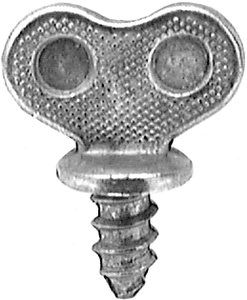stickybeak
New Member
hey everyone!
this is probably a really silly question, but i feel like i'm doing something wrong and maybe someone here can set me straight. i have seen several sign painters putting screws into their cans of enamel so that it never skins over as it has less oxygen getting into the can, i thought this seemed like a great idea and after reading a few threads in different parts of the internet thought i'd try it.
first i got some sheet metal self tapping screws to try and after putting one in the lid of a fresh can of paint, and taking it out only once, the next time i put it in, it was loose in its hole and wasn't making a seal at all, so then i read somewhere that someone used hex head roofing screws with the little plastic washer on them so i got some to try and after putting it in and taking it out maybe three times, it is ALSO loose and not making a seal! i feel like a complete ninny and i'm guessing i've overlooked a step or have done something wrong for this little trick to fail so completely for me...
is it because the tin that the lid of the can is made of is so thin it's bowing and the hole for the screw is stretching(? not even sure that's a thing that can happen?) anyway, hoping i haven't completely buggered up a fresh quart of enamel with this! should have tried it on one of my little half pint cans in retrospect, ah well... live and learn! any info, pictures, or ideas would be highly appreciated!
all the best, george
this is probably a really silly question, but i feel like i'm doing something wrong and maybe someone here can set me straight. i have seen several sign painters putting screws into their cans of enamel so that it never skins over as it has less oxygen getting into the can, i thought this seemed like a great idea and after reading a few threads in different parts of the internet thought i'd try it.
first i got some sheet metal self tapping screws to try and after putting one in the lid of a fresh can of paint, and taking it out only once, the next time i put it in, it was loose in its hole and wasn't making a seal at all, so then i read somewhere that someone used hex head roofing screws with the little plastic washer on them so i got some to try and after putting it in and taking it out maybe three times, it is ALSO loose and not making a seal! i feel like a complete ninny and i'm guessing i've overlooked a step or have done something wrong for this little trick to fail so completely for me...
is it because the tin that the lid of the can is made of is so thin it's bowing and the hole for the screw is stretching(? not even sure that's a thing that can happen?) anyway, hoping i haven't completely buggered up a fresh quart of enamel with this! should have tried it on one of my little half pint cans in retrospect, ah well... live and learn! any info, pictures, or ideas would be highly appreciated!
all the best, george





